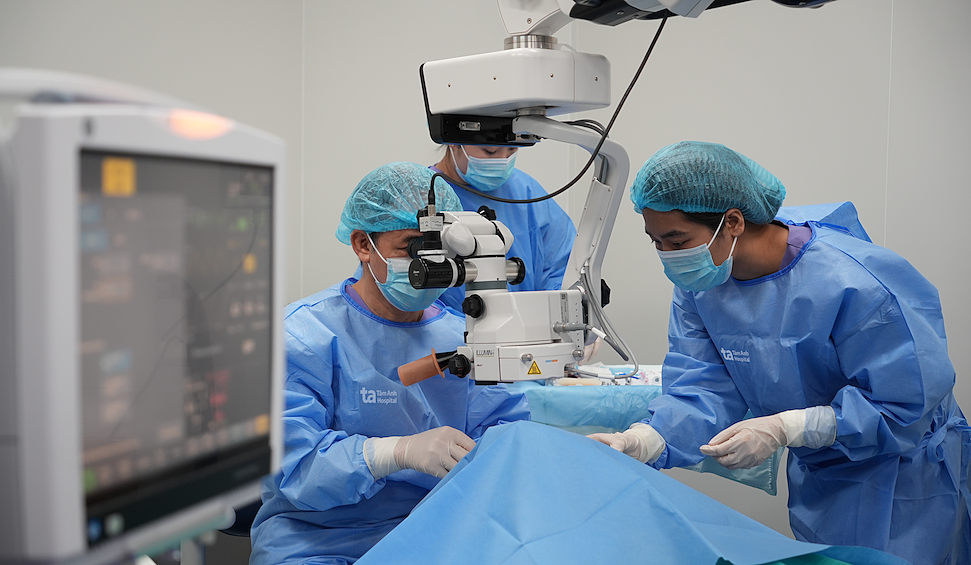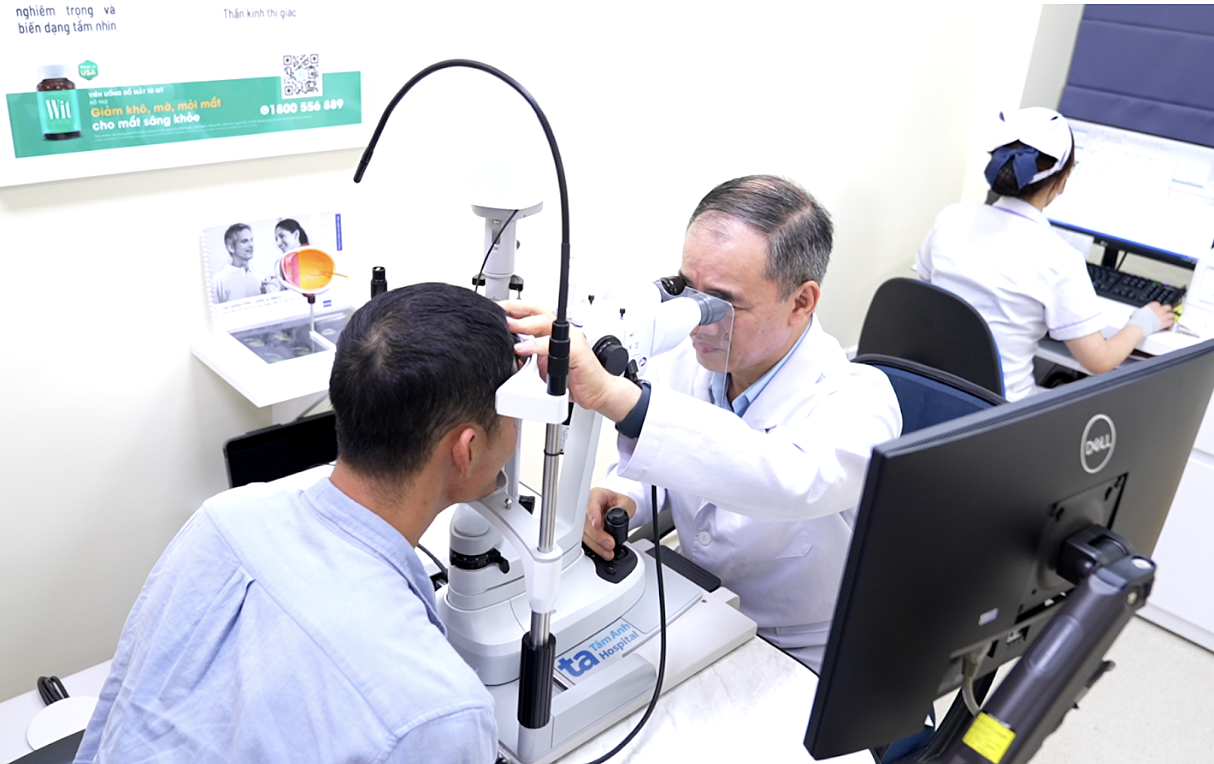Duy had been on the waiting list for a cornea transplant for two years but hadn't found a suitable donor. During a recent visit to Tam Anh General Hospital, Associate Professor Nguyen Xuan Hiep, Director of the High-Tech Eye Center, diagnosed him with extensive corneal scarring, iris atrophy, and fibrous adhesions on the back of his cornea. The scarring caused corneal opacity, obstructing his vision and rendering him blind in his left eye. According to Associate Professor Hiep, a cornea transplant was the only way to restore Duy's sight.
The center located a compatible imported cornea, and Duy underwent the transplant two weeks later. After two weeks of post-operative monitoring with no signs of rejection, he was discharged. Now, after two months, his vision has been restored.
 |
Associate Professor Hiep performing the cornea transplant. Photo: *Tam Anh General Hospital* |
An estimated 300,000 Vietnamese people need cornea transplants due to eye conditions like trauma, dystrophy, ulcers, or congenital diseases. Corneas are typically sourced from deceased brain-dead donors, but the donation rate is very low. "The domestic tissue supply is nowhere near enough to meet the demand," said Dr. Hiep, adding that many individuals who can't get a transplant face blindness or eye removal.
Since last year, the High-Tech Eye Center at Tam Anh General Hospital has collaborated with several domestic and international tissue banks to access a wider supply of quality corneas, restoring sight to patients in need of timely transplants. Imported tissues are transported under specialized cold storage conditions, preserving biological parameters such as clarity, thickness, and endothelial cell density. Upon arrival at the Stem Cell Center of Tam Anh General Hospital, the tissues undergo further evaluation before being transplanted to suitable patients.
"While there is a cost associated with these tissues, it's still significantly lower than the cost of treatment abroad. More importantly, it reduces the waiting time for patients," Dr. Hiep explained, adding that imported corneas are suitable for both full-thickness (penetrating) and partial-thickness (endothelial or anterior lamellar) transplants.
 |
Associate Professor Hiep during Duy's post-operative check-up. Photo: *Tam Anh General Hospital* |
Because the cornea doesn't contain blood vessels, the risk of rejection is much lower than with other organs like kidneys or livers. However, patients still require close monitoring and regular check-ups for at least the first two years after surgery. Many people who have transplants abroad find the travel expenses for follow-up appointments burdensome, leading to delays and increased risks of post-operative complications.
After 33 years of organ transplantation, Vietnam has performed over 9,500 transplants, mainly of kidneys, livers, corneas, and hearts. Organs are primarily sourced from deceased brain-dead donors or living relatives. However, the supply remains limited, especially from brain-dead donors. In the past two years, there has been a significant increase in brain-dead organ donations, saving numerous lives. In the first two months of this year, there were 21 brain-dead organ donations nationwide, compared to 41 cases in all of 2024.
Khue Lam
| Readers can submit questions about eye diseases here for doctors to answer. |












